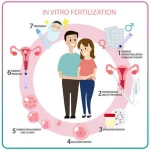What Happens After Egg Transfer in IVF: Your Complete Guide to the Journey Ahead
So, you’ve made it through the egg transfer stage of in vitro fertilization (IVF). Congratulations—that’s a huge milestone! But now you’re probably wondering: what’s next? The days and weeks following an embryo transfer can feel like an emotional rollercoaster, filled with hope, anxiety, and a million questions. Will it work? How will I know? What should I do—or not do—to give this the best shot? If you’re nodding along, you’re in the right place. This guide is here to walk you through everything that happens after the egg transfer, from the moment you leave the clinic to the day you (hopefully) get that life-changing positive result—and beyond.
IVF is a deeply personal process, and no two journeys are exactly alike. That’s why we’re diving into the nitty-gritty details: the science of implantation, the physical and emotional ups and downs, and the practical steps you can take to feel more in control. Plus, we’ll explore some lesser-known aspects—like how your diet might play a role, what the latest research says about frozen versus fresh transfers, and how to navigate unexpected outcomes. Whether you’re a first-timer or a seasoned IVF warrior, this article has something for you. Let’s get started.
The First 24 Hours: What’s Happening Inside?
The embryo transfer itself is quick—usually just 10-15 minutes—and you’re likely sent home with a mix of excitement and nerves. But what’s going on inside your body right after? Picture this: that tiny embryo (or embryos) is floating in your uterus, looking for the perfect spot to settle in. It’s not glued down yet—it’s more like a seed drifting in the wind, waiting to take root.
In the first 24 hours, the embryo is still in its early stages, often at the blastocyst stage (day 5 or 6 after fertilization). It’s busy hatching out of its protective shell, called the zona pellucida, so it can connect with your uterine lining. This process doesn’t happen instantly—it’s a slow dance between the embryo and your body. Your uterus, prepped with hormones like progesterone, is thickening its lining to create a cozy landing pad.
What You Might Feel
Physically, you might not notice much at all. Some people feel mild cramping or a slight bloated sensation from the procedure, but that’s usually it. Emotionally, though? That’s another story. You might feel restless, hopeful, or even tempted to Google every twinge. Here’s a quick tip: try to keep busy. Watch a funny movie, read a book, or chat with a friend. Your embryo doesn’t need you stressing over it—it’s doing its thing!
A Day-One Checklist
- ✔️ Rest if you feel like it, but don’t worry about strict bed rest (studies show it doesn’t improve success rates).
- ✔️ Drink plenty of water to stay hydrated.
- ❌ Avoid heavy lifting or intense workouts—keep it light.
- ❌ Don’t panic if you feel nothing; it’s totally normal.
The Two-Week Wait: A Day-by-Day Breakdown
The “two-week wait” (TWW)—the time between your transfer and your pregnancy test—is infamous in the IVF world. It’s about 10-14 days, depending on your clinic’s protocol, and it can feel like forever. Let’s break it down so you know what to expect each step of the way.
Days 1-3: The Settling Phase
For the first few days, the embryo is still finding its spot. By day 3 post-transfer, it’s usually starting to burrow into your uterine lining—a process called implantation. This is when the embryo’s outer cells (the ones that will become the placenta) start reaching out to connect with your blood supply. It’s a quiet, microscopic miracle.
You might feel:
- Mild cramps (like period pains) as your uterus adjusts.
- A little bloating from progesterone supplements.
- Nothing at all—and that’s okay!
Days 4-7: Implantation Takes Hold
By now, implantation is likely happening or has just finished. The embryo is digging deeper, and your body might start picking up on the tiny signals it’s sending. Human chorionic gonadotropin (hCG)—the pregnancy hormone—could begin to rise, though it’s still too early to detect with a home test.
What’s new?
- Some people notice light spotting, called implantation bleeding. It’s usually pink or brown and super light—not like a period.
- Fatigue might creep in as your body works overtime.
- Tender breasts could show up, thanks to progesterone (or early pregnancy!).
Days 8-14: The Waiting Game Peaks
By day 8 or 9, if implantation worked, hCG levels are climbing. This is when early pregnancy symptoms might kick in—or not. Everyone’s different. Some feel nauseous or extra tired, while others feel totally normal. Around day 10-12, your clinic might schedule a blood test to check your hCG levels, giving you the official word.
Here’s a fun fact: a 2023 study from the Journal of Assisted Reproduction and Genetics found that stress during the TWW doesn’t directly impact implantation success. So, while it’s easier said than done, try not to let worry take over.
Interactive Quiz: How Are You Feeling?
Take a quick moment to check in with yourself:
- Are you feeling cramps or spotting? (A) Yes (B) No
- How’s your energy level? (A) Super tired (B) Normal
- Any breast tenderness? (A) Yup (B) Nope
If you picked mostly A’s, you might be noticing early signs—though progesterone can mimic these too. Mostly B’s? Don’t stress; symptoms aren’t a must. Share your results with a friend or partner for a little support!
The Science of Implantation: What Makes It Stick?
Implantation is the magic moment when the embryo officially becomes part of you. But why do some embryos stick while others don’t? It’s a mix of biology, timing, and a dash of luck.
The Key Players
- Embryo Quality: A healthy blastocyst with the right number of chromosomes has a better shot. Preimplantation genetic testing (PGT) can boost success by picking the strongest candidates.
- Uterine Lining: It needs to


